Street Photography & Video Techniques Using The Fujifilm X-T2
Hi Haris! Would you like to start by introducing yourself, where do you live, what do you do and when did you first got interested in Photography?
My name is Haris Ahmed, and I was born and raised in London. Growing up I loved fine arts, and then ended up pursuing a degree in Digital Media. Upon graduation I had to help my father out with his property business. One day he handed me his camera because he wanted someone to take more professional photos of the interiors. I never really took photography seriously before, so I spent a lot of time on YouTube watching tutorials on how to take great interior photos. From there my love for the medium just grew, and now I’m here — though taking less interior photos, and more street and event photography.
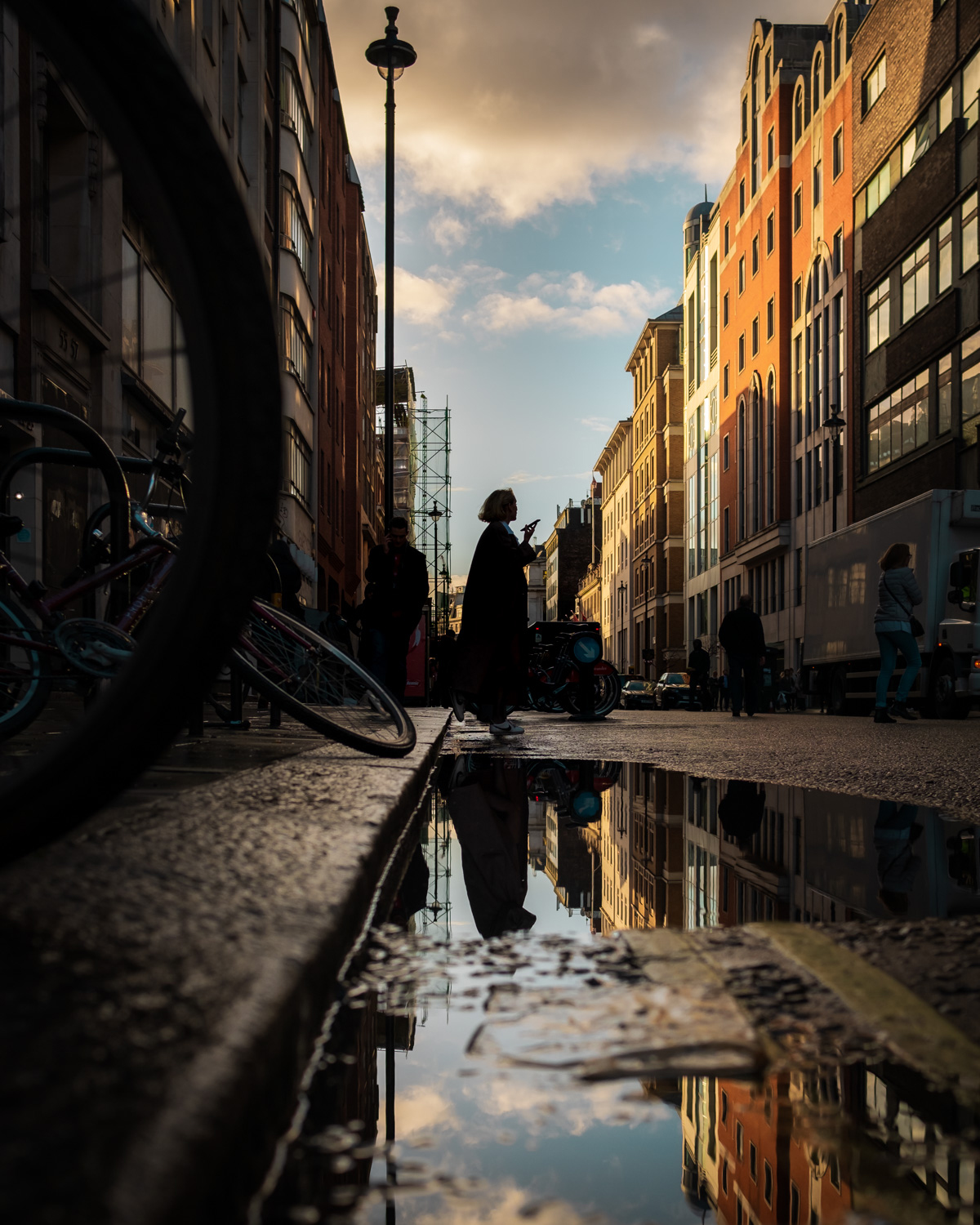
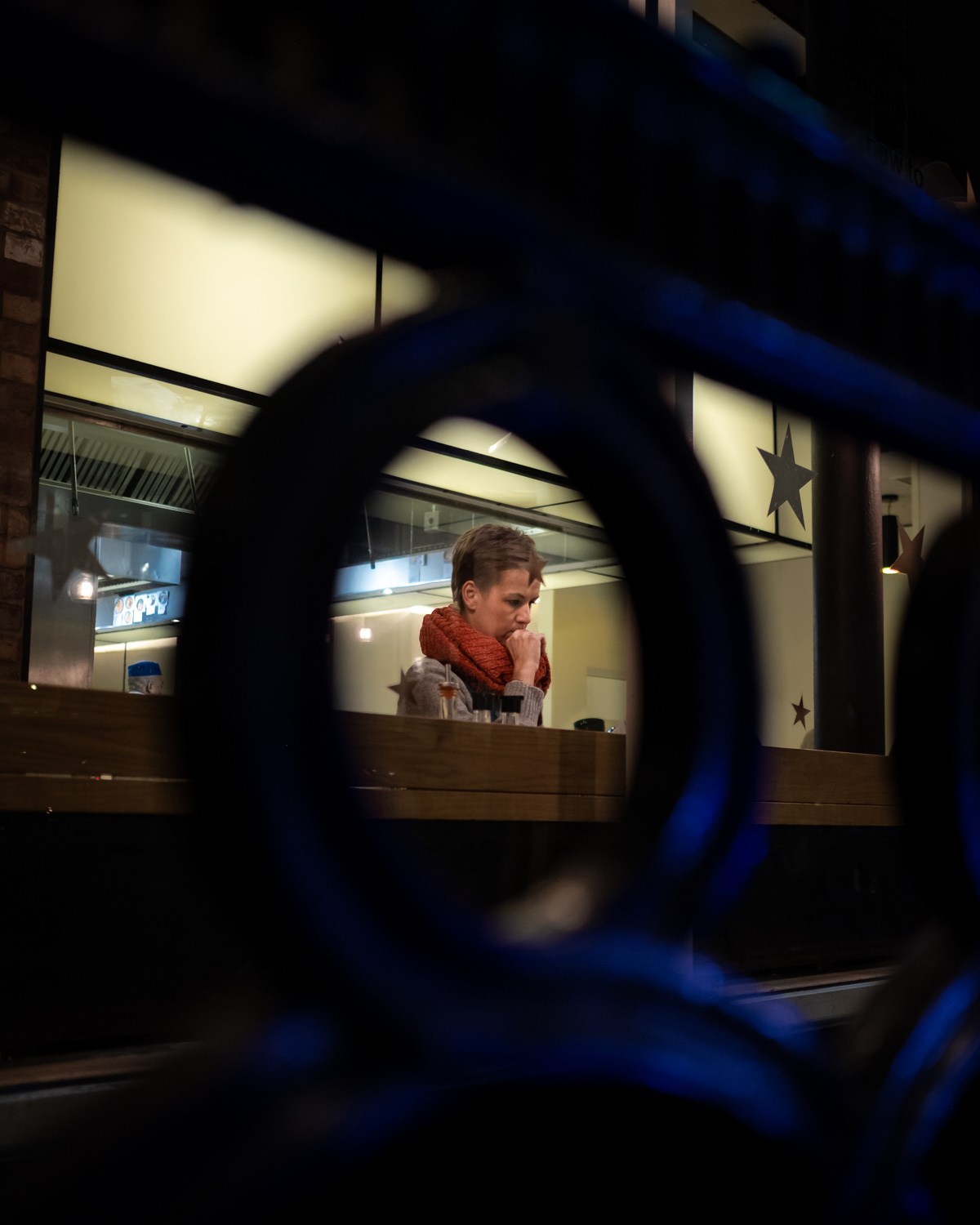
For how long you been using the Fuji X-T2 and what were you using previously?
My first encounter with a Fuji camera was when my girlfriend and I tried out a friend’s Fujifilm X-Pro2. We instantly fell in love with the size and aesthetics. I didn’t realise how much I could do with the electronic viewfinder. We then did some research, weighing out the different specs of the Fuji lineup against our budget.
I ended up selling my Canon 6D to buy an X-T2 to explore the Fuji system further. We both still have our Canon 6D Mk II for our corporate work, but I find myself using the Fuji more because of its easy, unobtrusive, casual nature, making it great for quick candid shots on the go. The only time it’s not in my bag is when my girlfriend has stolen it from me to use it for the day!
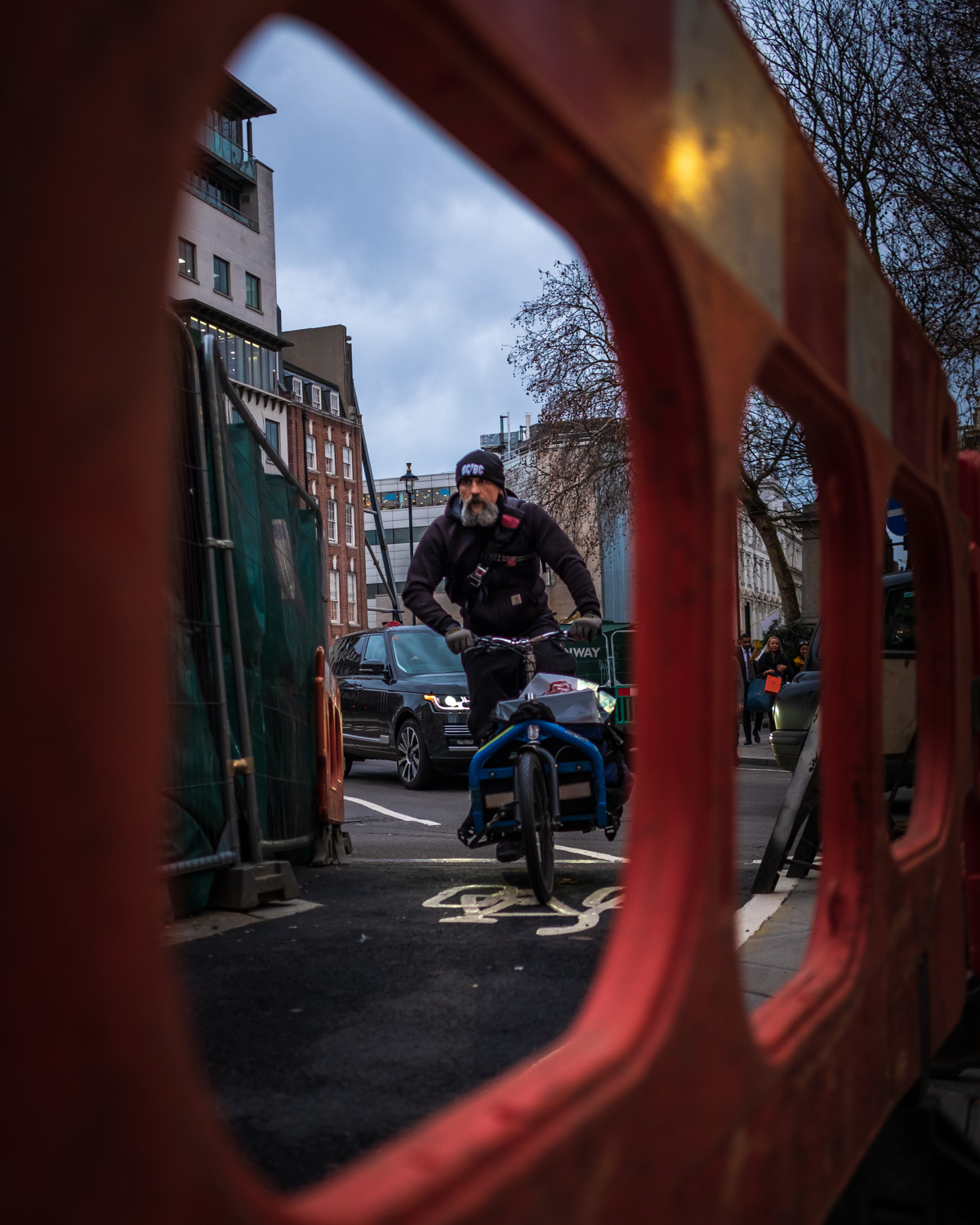
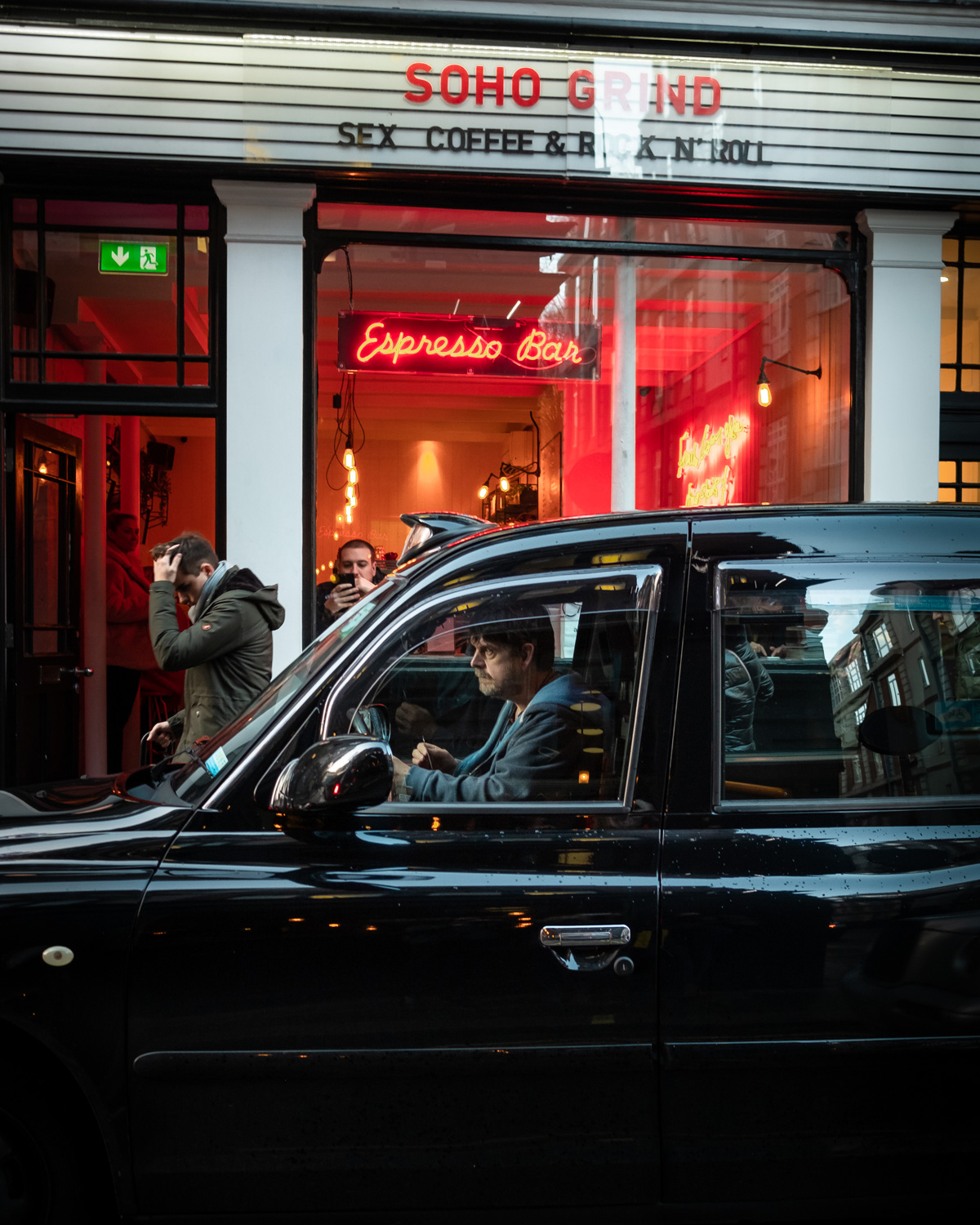
Do you find the X-T2 versatile enough to be used both for stills and video?
The Fujifilm X-T2 has become my main camera for personal work. The face autofocus and inconspicuous nature really helps to nail more candid street photographs. With video, I can take my production further by shooting at 100fps. In fact, I recently shot an entire music video on with that spec through the 23mm f2 lens.
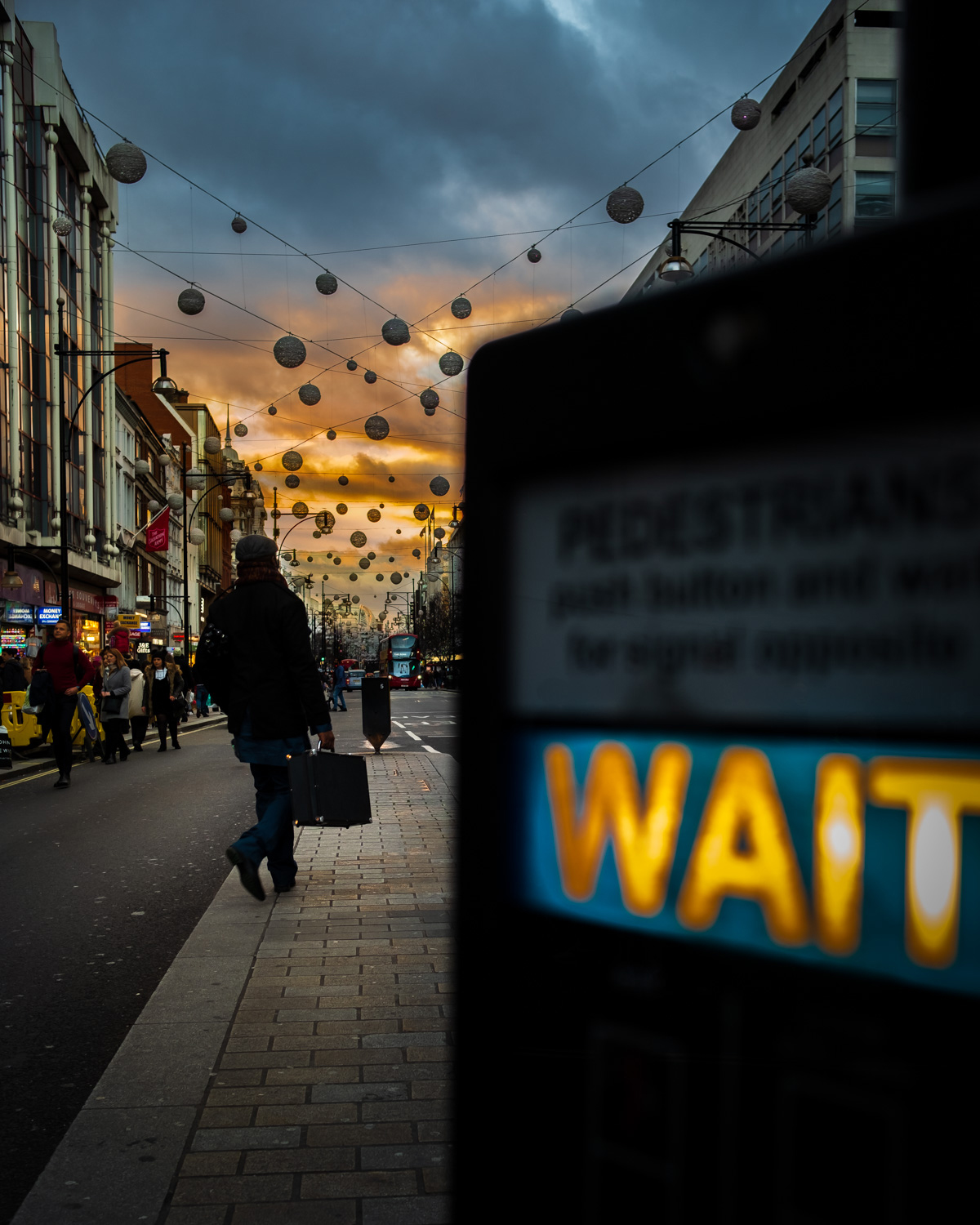
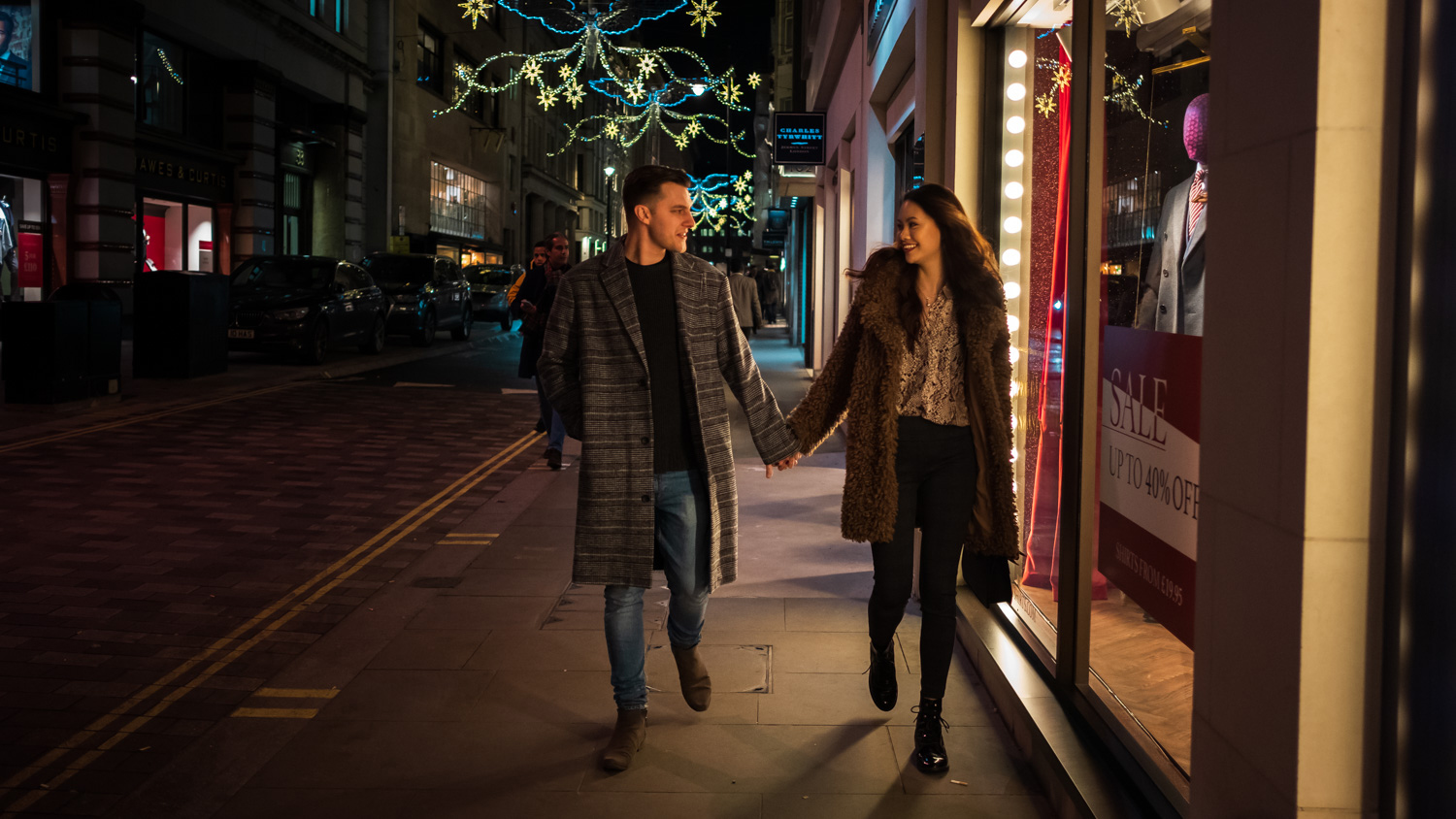
Could you share some tips for shooting handheld video with the X-T2?
If anyone is wondering how they can shoot handheld without spending a lot of money and keeping a minimalist setup, I invite you to practice. I grew up wanting to be a cinematographer but put it off because I felt it was an expensive hobby. I realise now with a decent kit and some tricks you can still pull off a cinema-level film. You just have to do it, and make it easier for you to just pick up a camera and GO! My aesthetic is very quick, run and gun, music video b-roll style.
To stabilize my shots without a gimbal, I would typically have a strong camera strap around my neck and lock my elbows in whilst pushing the camera in front of me. And shooting without a gimbal actually allows me to bring in the organic movements I want for more creative tracking shots or transitional “flips” like you see in my videos. Moving like that feels like I’m physically making a film with my hands. It can be a very tangible, involved process. Just like with all the dials on the Fuji system, you feel like you’re making the visuals rather than just simply recording them.
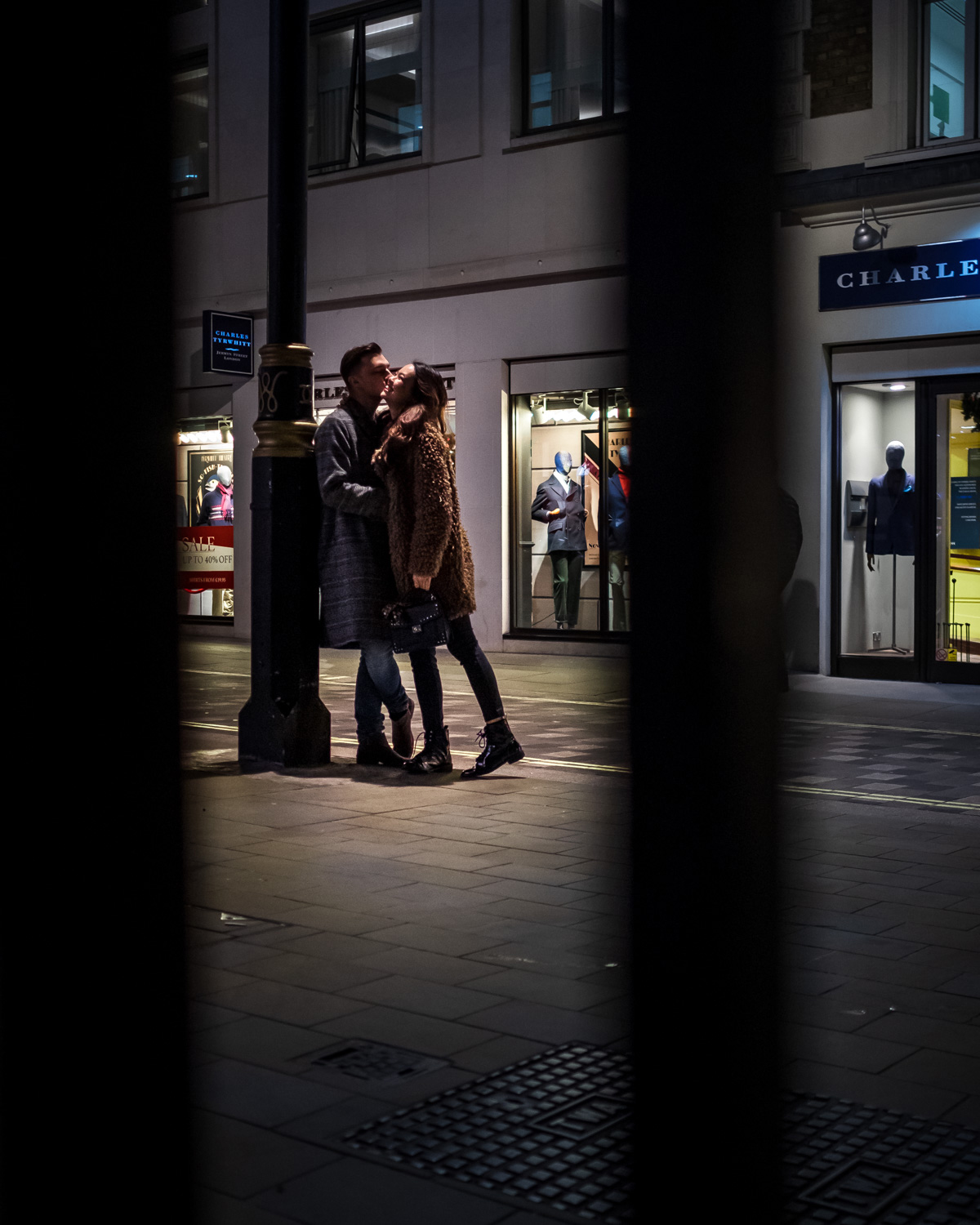
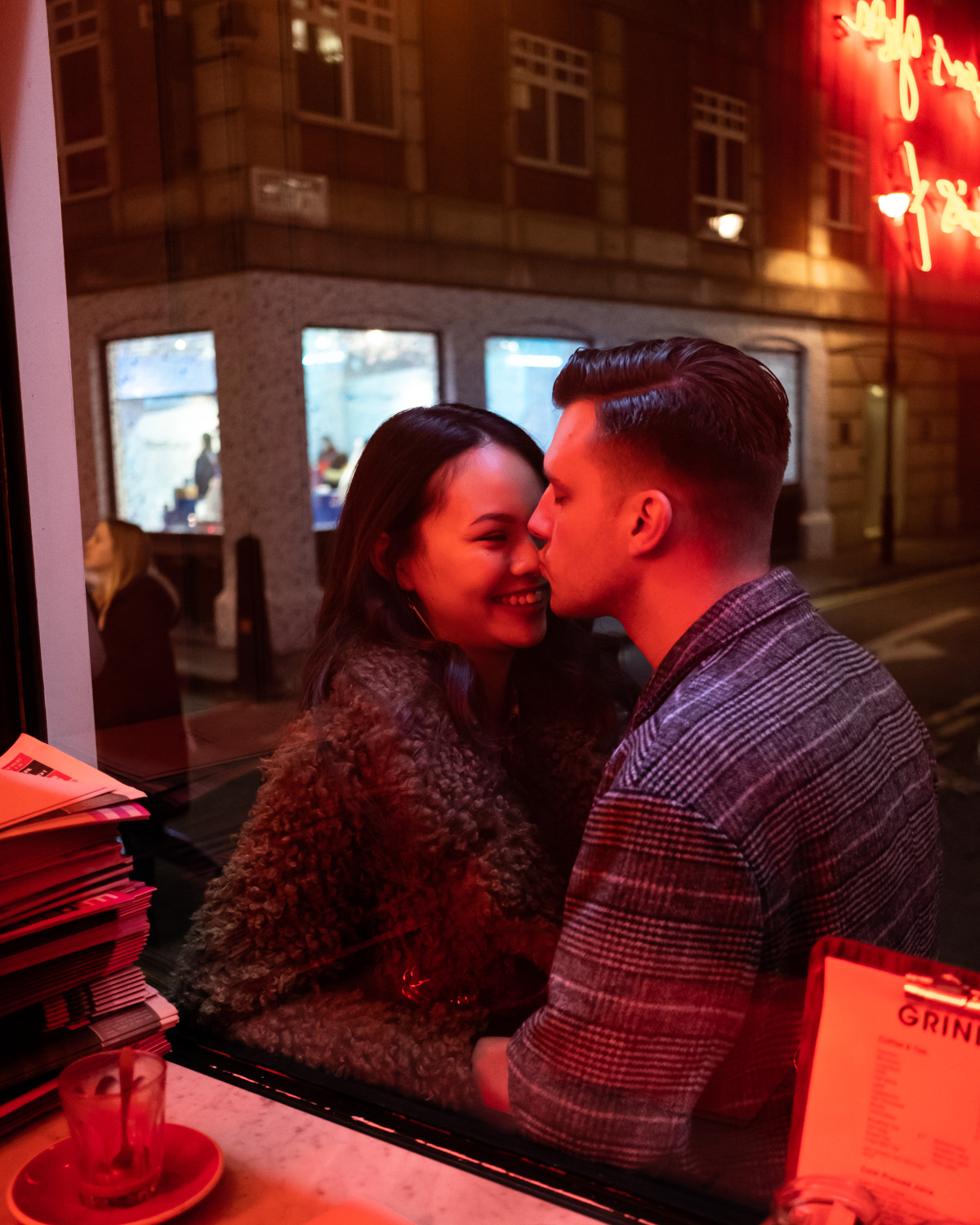
Regarding this Street Portraits project of yours, how and when it all started?
The Street Portraits project came about from this mentality about wanting to make rather than just take. Photography and filmmaking can be such a collaborative process between the people in front of and behind the camera. After experimenting and having fun building my craft, I wanted to share it with people and use it to boost other peoples’ craft up as well. Two of my good friends are both aspiring models, and having that established rapport really helped when it came to making the Street Portraits photos and videos. It wasn’t just me shooting them, but rather a co-creation process whilst having a good time with friends.
In your opinion what’s the most important aspect of directing couples in a photoshoot?
I recommend that any filmmaker or photographer take the time to get to know their subject before a shoot as building that relationship can make it all go a lot smoother. For example, in my wedding photography, I always make an effort to meet the couple for an engagement shoot, getting to know their personalities and quirks. This can help build both your confidence in how to direct them, what works for them, and how to get the right moments in the big day. It also reassures the clients of your own trustworthiness and skill, leading to good reviews and further recommendations for potential new clients!
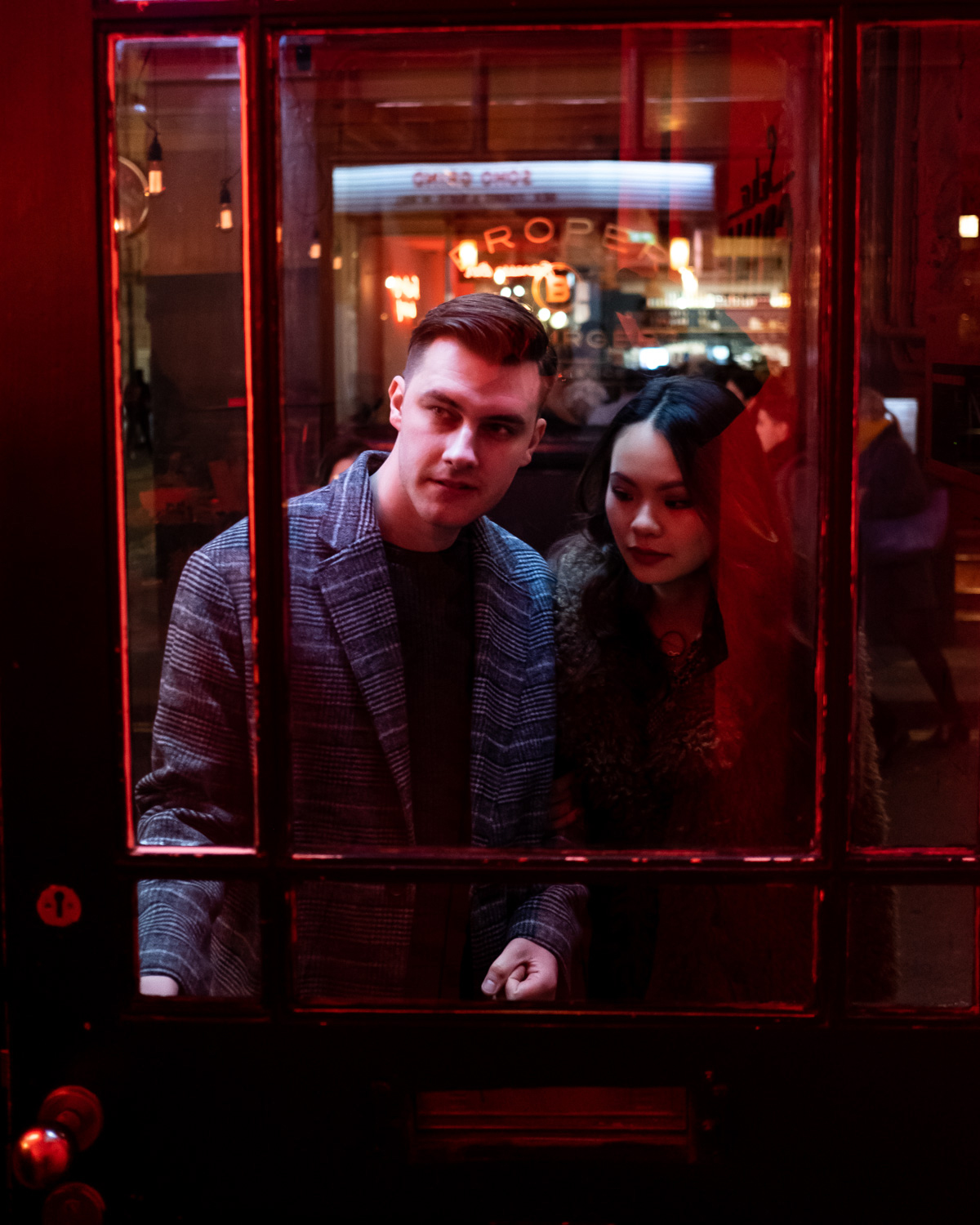
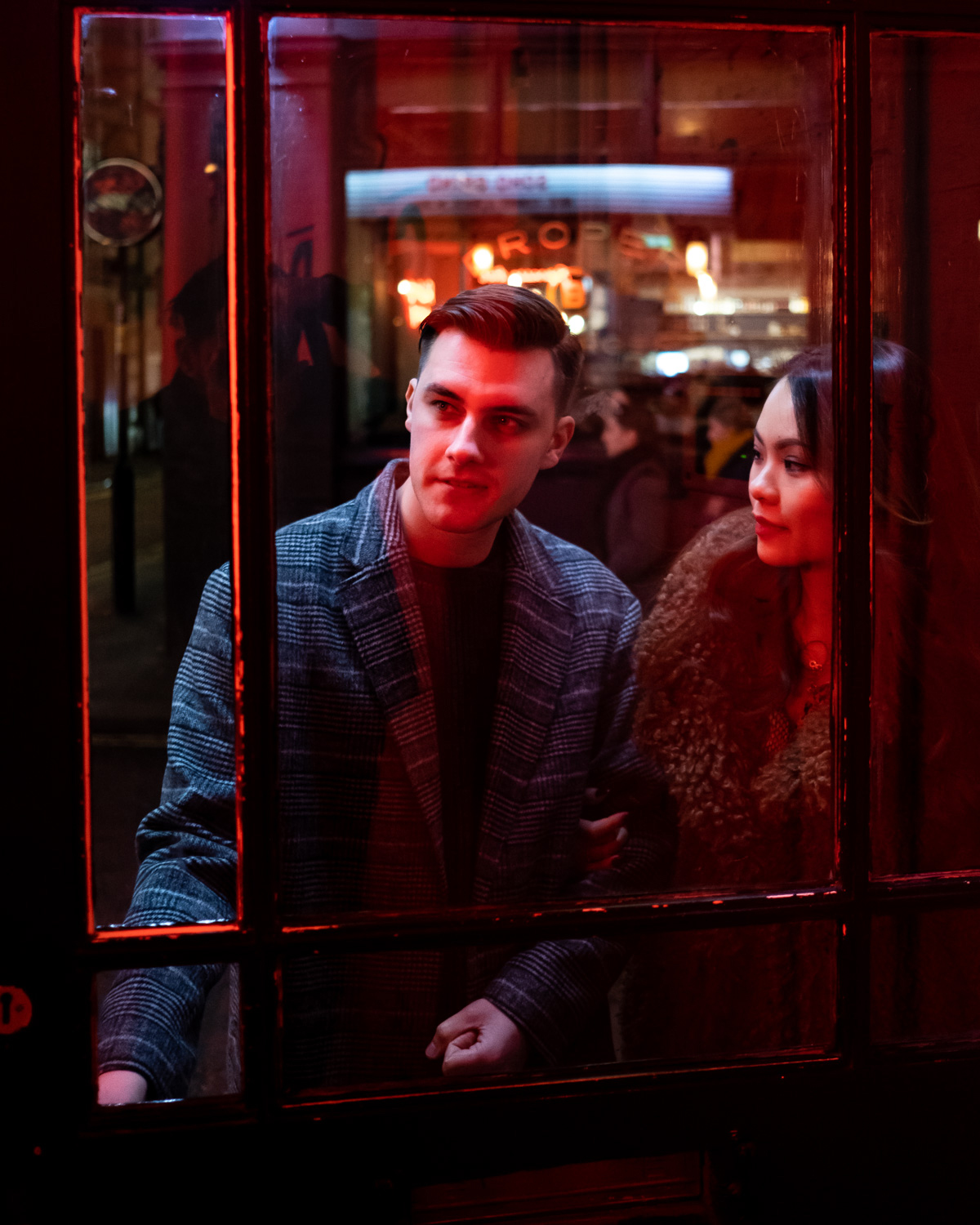
Could you share a couple of tips for shooting at night, using just the available light?
When it comes to shooting at night, do not be afraid to bump up your ISO to catch those candid moments. You’d be surprised how much cameras these days can handle. At the same time I love having a moody feel, protecting my highlights to the available streetlights to sustain a dimmer, more subtle aesthetic. I won’t ever go under 1/120 shutter to make sure I don’t miss an elegant movement. (Unless of course I want movement).
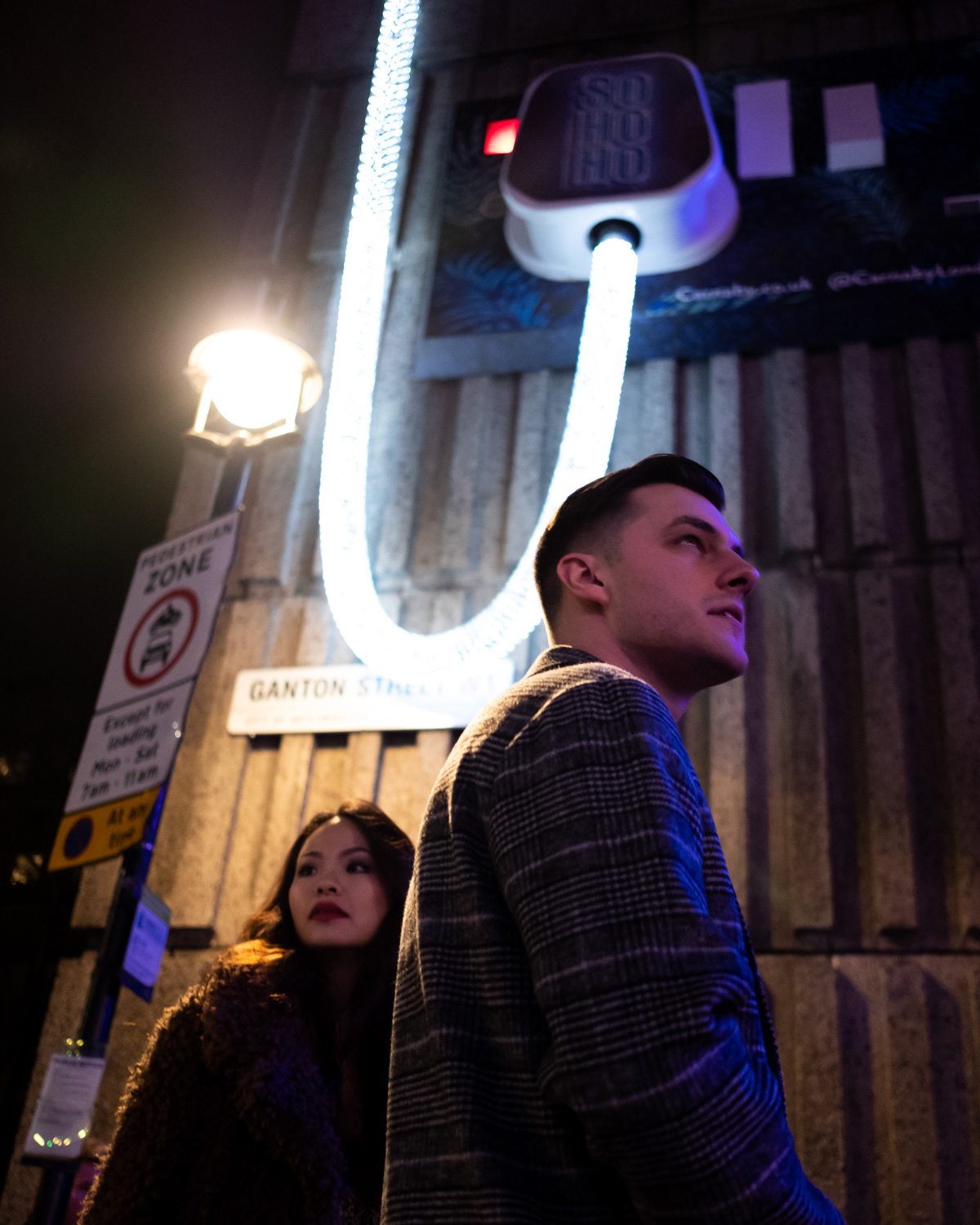
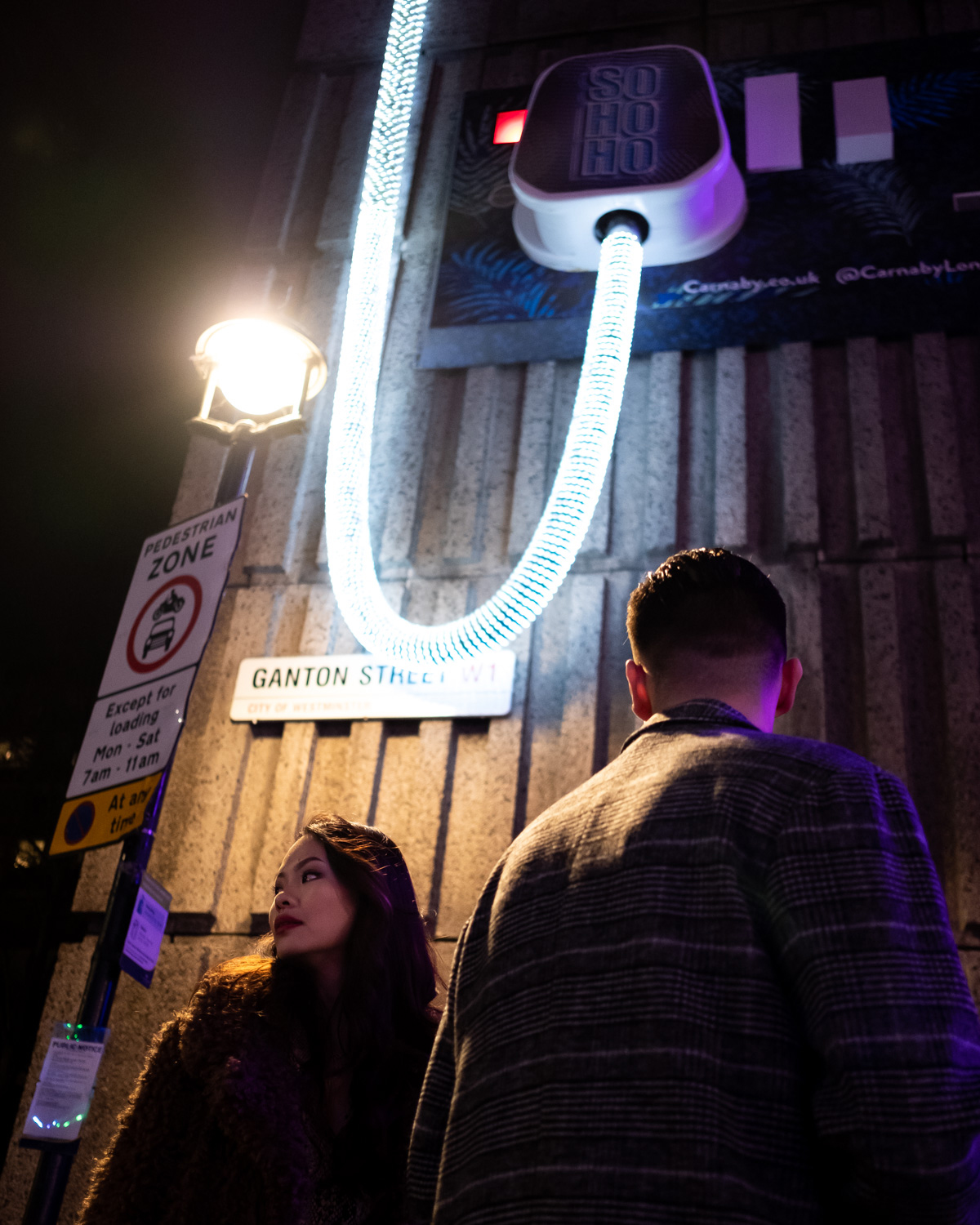
We noticed that, in your portraiture work, you use the background as an important element of the photo, giving context to the image. Do you prefer shooting on location instead of using a studio?
Shooting in the streets has a certain character and liveliness to it – especially in London. I can say that even after having traveled around the world, there’s nothing quite like the urban life of the UK’s vibrant, multi-cultural capital. The range of architecture, weather, and people in this city always provides a new surprise to discover around every corner, giving every photo here a certain character. That said, you can only discover that character if your eyes (and lenses) are open to it, so wherever you’re based, be proud of it, and rep your surroundings!
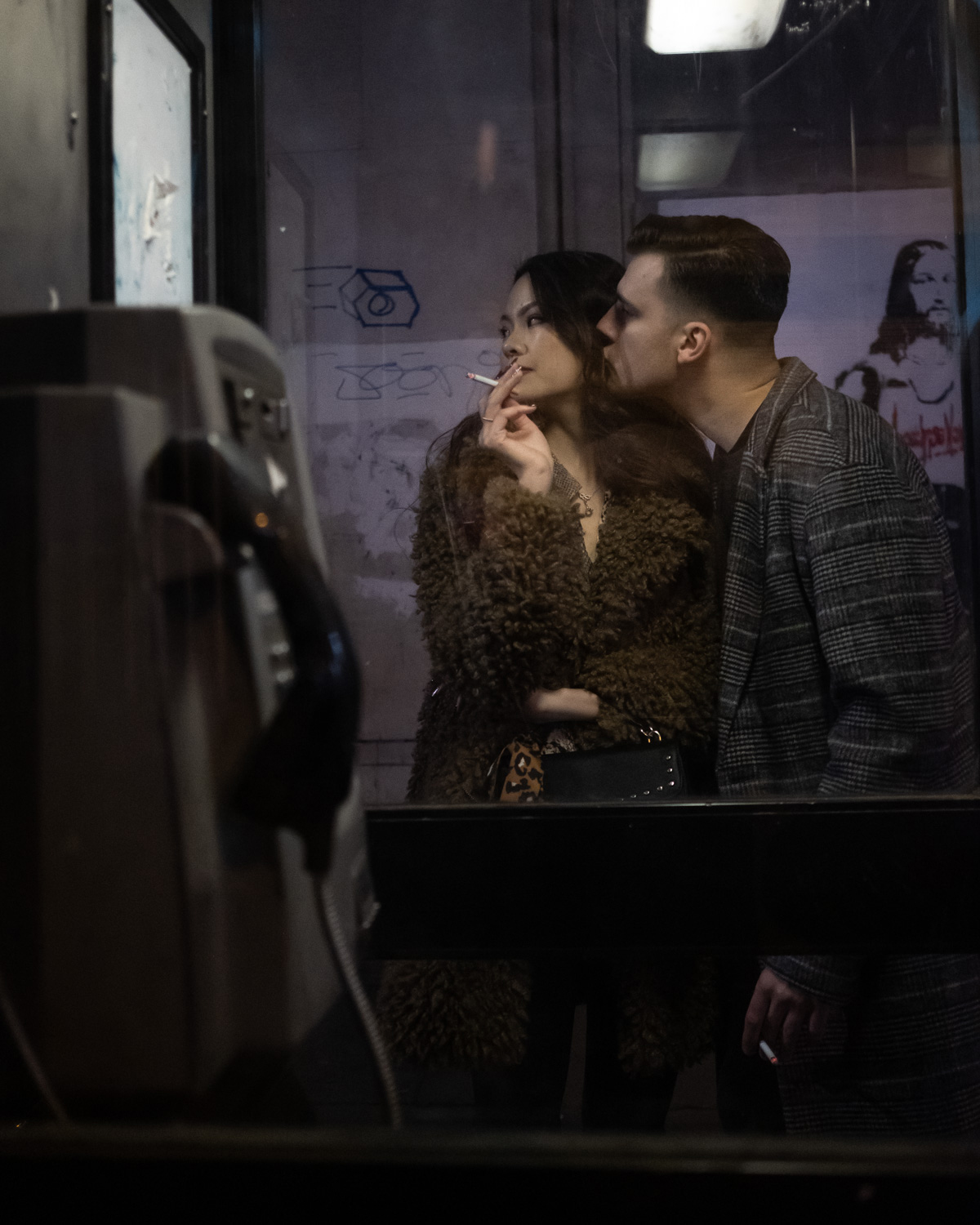
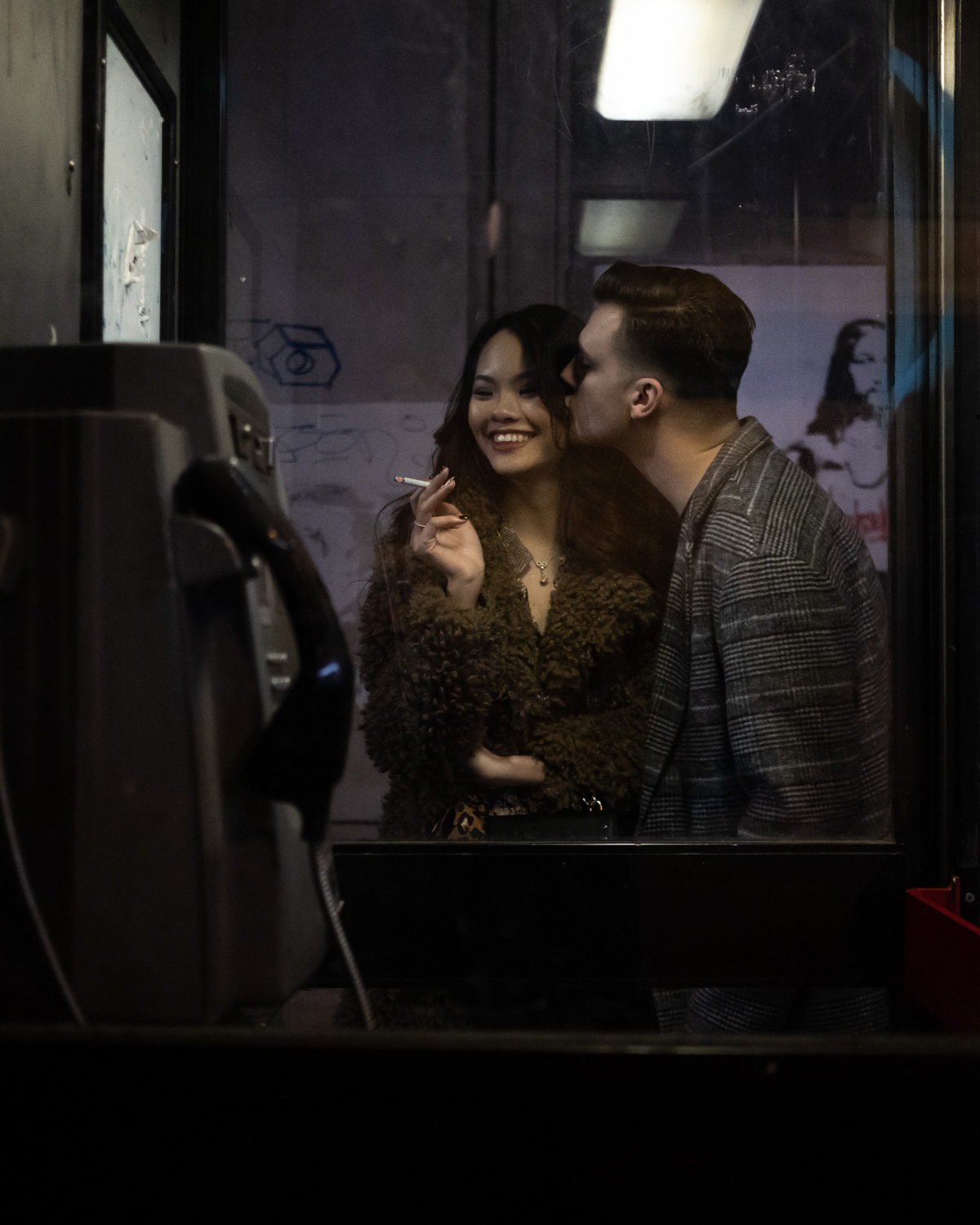
What are your usual camera settings and workflow (file processing, the software you use, presets)?
With regards to my editing workflow, I will say it right off the bat: I don’t like presets nor believe in making presets to sell. Every photoshoot will have a certain mood and vibe associated to them. I will craft and edit the first few photos to what I feel is the story or vibe I’m trying to convey with the image. Then, in Lightroom I will copy the colour scheme across my project to have a consistent set, with some tweaks if necessary. But I would never force that “character” from one set onto another. It’s like trying to swap the covers of two books. Let the image, the vibe, and the subject of that shoot influence how you should edit the photo — not a blind blanket application of someone else’s instructions.
JOIN US! SUBSCRIBE TODAY THE FUJI X PASSION MAGAZINE
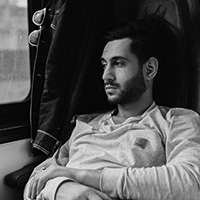
“My name is Haris Ahmed, and I was born and raised in London. I am a photographer / filmmaker and I use Youtube to document my journey. I am obsessed with capturing and recording unique moments. Whether it is sunsets or candid expressions, there is always a story to be found that is worth sharing.”





Khürt L. Williams
April 11, 2020 @ 2:50 am
Fantastic photos. I love the look.